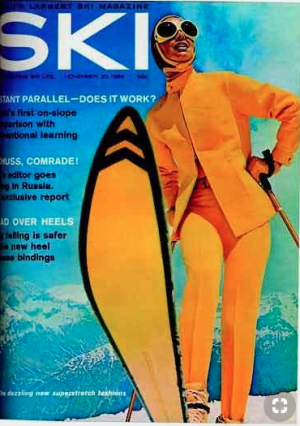This is the first in a series about Ski Magazine’s 1970s ski testing program called Ski Performance Prediction or SKIpp. Its methodology combined engineering analysis as well as a structured series of on the snow maneuvers designed to bring out the best and worst of a ski under a variety of conditions.
Part one of the series Determining How Skis Worked is an overview of the engineering analysis. The second part discusses the on-snow testing that we did and the third is about the politics of ski testing along with a lesson learned.

Ski (and boot and binding testing) programs came about because skiers were faced with a plethora of choices backed by marketing hype that was confusing at best and to some, downright misleading. Both SKIING and Ski Magazine decided to jump into the fray and help their readers. Ski’s approach was significantly different than Skiing. Given several glasses of smoky, single malt scotch, I might be persuaded to cover the quicksand of boot and binding testing in the 70s.
On the Snow Testing is a very brief overview of the on the snow part of the program. Typically, we were at a mountain for about twenty-five days and tested 200+ skis. Not bad work if you can get it, but it wasn’t all fun. It was work!
Ski testing unleashed a set of business issues that challenged the leadership of Ski Magazine. Most of the discussions were well above my pay grade as a lowly associate editor. However, on more than one occasion, I was called into a meeting with the high-mucky mucks and asked why manufacturer A’s didn’t get high marks. In Politics of Ski Testing, there’s enough to give you an idea of what the discussions were like.
In the end, the SKIpp and the engineering teams at most of the manufacturers found common ground, and we helped each other out. It was the marketing people that created all the problems because the cries from the ski shops were giving them migraines.
The shaped ski as we know it today wasn’t on the horizon. The material science and engineering software that creates them was in its infancy and ski design was as much black art as it was engineering. We got a glimpse of the future one year when we tested twenty odd short skis – 170 – 180 centimeters – and were pleasantly surprised by the results. The market was ready and when engineering and materials science caught up, voilà, you have the shaped ski.











